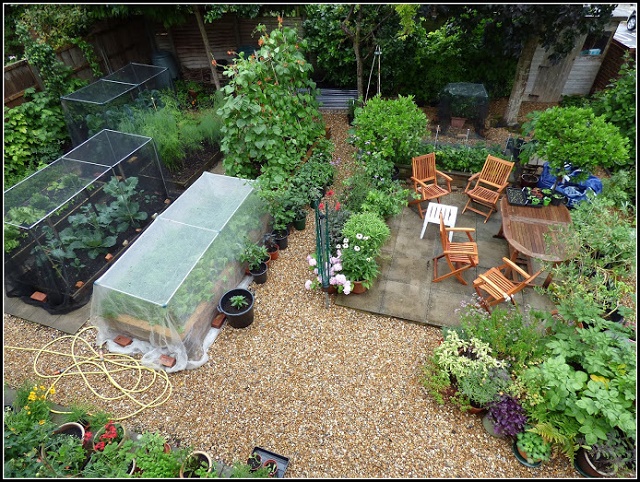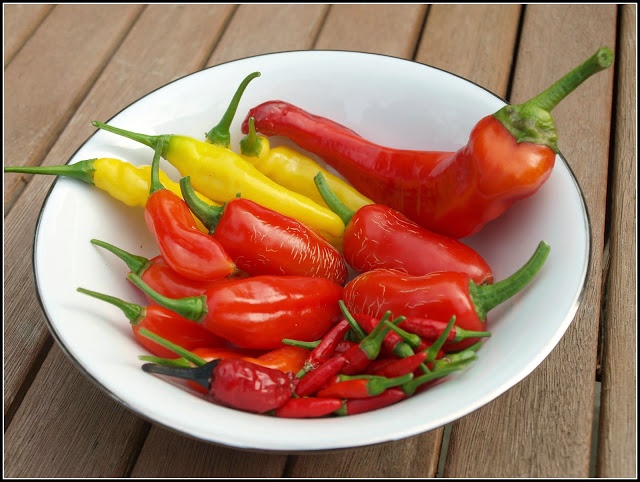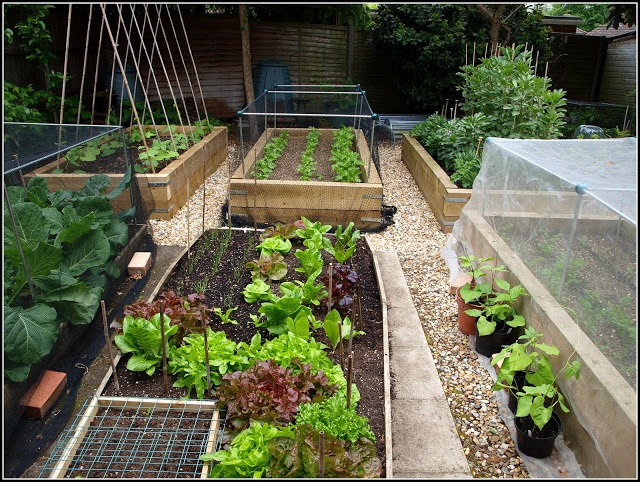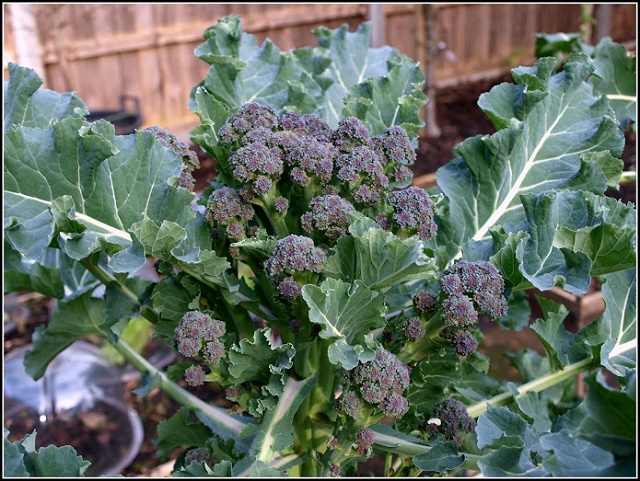
We spoke with Mark from Mark's Veg Plot about the space you need to have your own veg plot, the difference between top and potting soil, and how to choose vegetables suitable for your garden and climate. Check out our interview below.
Our interview with Mark's Veg Plot
1. Living in a "typical" English suburban property, the word ‘space’ must leave you feeling anxious where gardening is concerned. What are your 5 best tips for readers looking to optimise their garden space and make the most out of their home growing?
Most modern properties have very small gardens and are often overshadowed by neighbouring houses which block out the sunlight.
Tip No.1: Don’t do anything permanent to your garden until you have lived in your property for at least a year, so you can see how much sunlight each area gets in each season.
Tip No.2: Consider growing things in pots so that you can move them around at will.
Tip No.3: When buying plants, research how big they will be when fully grown and choose ones that won’t be too big.
Tip No.4: Buy a soil-testing kit and see what type of soil you have. It may need adjusting, to get the right level of acidity.
Tip No.5: See what plants your neighbours grow. Plants perform differently from area to area.

2. What is the difference between Topsoil and Potting Soil? Does it make a difference to the overall outcome of the vegetable growing process?
Topsoil is the upper layer of natural soil, and usually contains plenty of organic matter and nutrients, so it is, therefore, good for growing vegetables, (for instance in raised beds) but it is often very dense and heavy, and can easily become compacted. Potting soil is an artificially-produced growing-medium for use in pots and containers. It usually contains materials like bark, peat, sand or even perlite, in order to lighten it and make it drain well.
3. ‘Your specialisms are chillies, tomatoes and PSB’ – knowing that you cannot grow everything that you throw into your summer salad, how do you choose which vegetables would be suitable for your garden and the climate?
In a word “experience”! I have experimented with many crops over the years and have established what works and what doesn’t. For instance, we love endives, but I have found by trial-and-error that it is not worth growing them in Spring or Summer – they always bolt. If I sow in August for an Autumn crop they do well.

4. What is the best type of Soil for Containers and Gardens?
Topsoil is good for raised beds and bigger areas, but Potting soil is better for small containers. That said, I always try to incorporate as much home-made compost as possible, especially in my raised beds. Compost, being largely organic matter, aids moisture-retention and provides rich nutrients to hungry plants.
5. What are the benefits of using longrow/bell cloches, as opposed to horticultural fleeces or a mini greenhouse?
Cloches are rigid, whereas fleece is soft. This means that cloches can provide better protection from heavy rain, and from animals. In my garden, I suffer lots of damage from foxes, who do not hesitate to trample all over fleece, but are deterred by cloches. The mini-greenhouses are extremely useful for protecting young seedlings (especially tomatoes and chillis!) from frost, the wind, and rain in the Spring-time, but they can easily be disassembled for storage during the warmer months.

6. What has been the most challenging vegetable/herb you have grown so far, and did space play a role in making it that much more challenging?
The most challenging vegetable for me has undoubtedly been Celeriac. I have grown it several times but have never managed to get anything bigger than a tennis ball. I don’t think space played a part here; I think the biggest factor is the texture of the soil – mine is very sandy and dries out quickly. Celeriac likes moist soil with lots of organic matter.
7. If I am a beginner, what is the best advice you could give me when starting out my own veg plot – in terms of size, time, weather conditions and what to grow?
The best advice I could give is – start small and don’t try to grow everything at once. Also, start with a few of the easier veg (like lettuces, beans, and beetroot). It also makes sense to concentrate on growing what you like to eat so that you don’t end up throwing produce away. To begin with, don’t attempt to grow crops that need a lot of attention – e.g. tomatoes. Instead, go for something easier that is likely to produce good results which will provide the encouragement to become gradually more adventurous. Courgettes are practically fail-safe!
8. What is VSR and what additional factors influence its rating?
VSR stands for “Value for Space Rating”. It is a (non-scientific) measure of the value of growing a particular fruit or vegetable. To determine VSR you need to consider how much produce you can get from a given space (e.g. one single cabbage takes a lot of space, but Spring Onions need much less room); what the price of that crop would be if you bought it (e.g. onions are cheap, herbs are expensive); how long the crop takes to mature (e.g. Purple Sprouting Broccoli [PSB] occupies your ground for about 10 months, whereas Radishes can mature in as little as 6 weeks); also, does your crop keep well? PSB bought in a shop is never good, but home-grown PSB cooked soon after picking is lovely.

9. What points are there to consider when looking at volume vs diversity, especially in a garden with limited space?
In my household, there are only two of us, and it doesn’t make sense to grow more than we can eat. We do occasionally freeze some of the produce – e.g. Runner Beans – but we prefer to eat things fresh so we tend not to preserve much. Another consideration is: how much of the “basic commodities” do we need? For instance, we use a lot of onions in our cooking, and if I were to grow enough onions to feed us all year I would need to devote the whole of my plot to that single vegetable! Another point to consider is the fact that weather conditions (which we can’t control) have a big effect on veg-growing. Growing lots of different things means that a total crop failure is much less likely. If we get lots of rain the Runner beans will probably do well, and the tomatoes will be poor, but if we get a really hot Summer it will be the other way round.
10. What is ‘The Net Effect’ and why is it necessary?
Over the years I have learned that a lot of crops (and the hard work that goes into growing them) can be wasted if they are not protected. There always seems to be a queue of pests waiting to attack your veg! I use nets to keep butterflies from laying eggs on my brassicas; I use nets to stop the Blackbirds pinching my Blueberries; I use nets to stop cats and foxes digging up my precious seedlings; in fact, I net pretty much everything if I can! This, of course, costs money, and I have slowly built up a collection of nets and their supports, buying a little more whenever I have felt I could afford it (and putting these items on my Christmas wishlist!). These days I am very keen on the modular systems involving aluminium rods joined together with plastic connectors, or the ubiquitous “Build-a-Ball” things.




